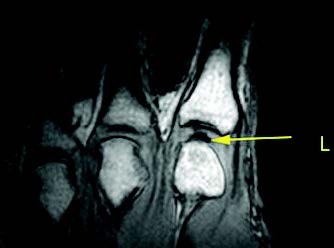MRI Scan Reveals Why Knuckles Crack

By Samba Lampich
The room is quiet and the only sound is that of pencils scratching answers on papers as everyone focuses on the exam. Then the silence is broken by the unmistakable sound of someone cracking their knuckles.
Scientists now know why knuckles make that distinct popping sound when cracked.
A 1947 study of X-rays of knuckles cracking seemed to suggest that sound occurred when the bones at the joint rapidly separated forming an air bubble or cavity, a process known as caviation. But in 1970 another group of researchers suggested the cracking noise was emitted when the cavity collapsed. The bubble-bursting theory was widely accepted but remained uncertain until recently.
The Pull My Finger Study
A team of Canadian researchers set out to conduct a test to get a final and definite answer. Gregory Kawchuk, a bioengineer and rehabilitation-medicine specialist at the University of Alberta in Canada and his team used magnetic resonance imaging, or MRI to study the very fast process of cracking knuckles. The results were published in the April 2015 edition of journal PLOS One.
They enlisted team member Jerome Fryer who had the special skill they needed. “We call him the Wayne Gretzky of knuckle cracking,” explains Kawchuk. “He can do it in all 10 fingers.”
Fryer laid face-down and put his hand inside the MRI machine and they made a movie of his knuckles as they pulled a cable attached to each of his fingers.
Cracking the Secret
As the finger is pulled, tension is created in the knuckle joint where fluid rapidly accumulates. A cavity or bubble opens and as it does the knuckle makes a pop sound.
The MRI showed that the bubble remained in the joint, for up to 20 minutes. The results were clear. The cracking sound comes when a bubble forms between the knuckle joint, not when it bursts.
The researchers also say that habitual knuckle cracking has not been shown to increase damage to joints causing arthritis.
They hope that understanding the mechanics underlying joints can lead to a better development of therapeutic treatment for patients with degenerative joint diseases.
Finally, the researchers acknowledge that their experiment did not explain why the sound of cracking knuckles could be heard across a room.
Extenstion Questions
- What are some benefits of popping or manipulating joints?
- When would joint cracking be harmful?